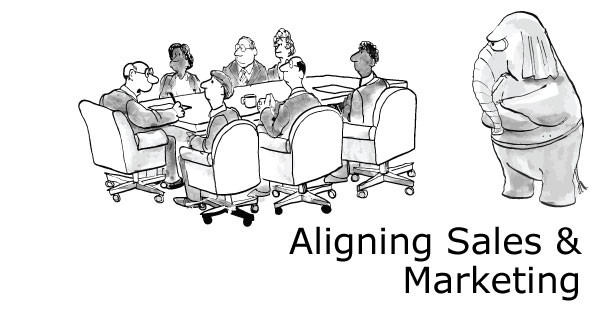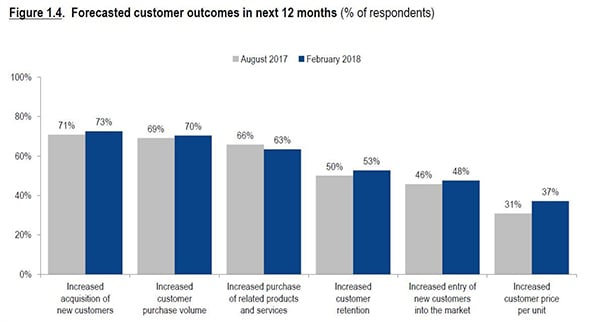
Written By: Asher Fredricks | Oct 4, 2018 12:00:00 AM
Written by Asher Fredricks, Marketing Manager for FLS Transportation Services. Article 2 of a 3-part series.
If you’re reading this article, you either disagreed with what I put forward in my previous article “The Marketer is Dead” or you’re genuinely interested in aligning marketing and sales… either way, you’re here so let’s get cracking.
If you google “aligning marketing and sales B2B” you receive 8,060,000 results; Google “align sales and marketing”, 30,200,000 results; and “aligning marketing and sales” 9,080,000 results.
Clearly, aligning marketing and sales is, and I quote, “so hot right now”.
And why shouldn’t it be? We all know the stats. B2B’s that have tightly aligned marketing and sales teams have 36% higher customer retention rates (MarketingProfs), 38% higher win rates (MarketingProfs), are 67% better at closing deals (Marketo), and generate 209% more revenue from marketing (Marketo).
It’s no surprise then that you’re interested in aligning marketing and sales, especially since your top goal is driving new customer acquisition (CMO survey, Feb 2018).
And content producers know. A quick glance at the results for our search query shows that the top hits are predictably from the usual culprits: Forbes, Hubspot, Salesforce, Marketo & LinkedIn.
So, here’s my question to you: with step by step guides, best practices, and other helpful content so readily available, why aren’t you aligned? There’s literally hundreds of thousands of articles on the topic, yet here you are, reading another article on aligning the two departments.
Why is that? Why can’t sales and marketing align already? Any ideas?
No, it has nothing to do with sales not being able to trust marketing leads. Nope, nothing to do with respect either. It’s not about communication or collaboration or accountability or KPI or visibility or speaking the same language or sharing the same funnel (however, I concede they all play a part).
No, it’s something deeper. It’s something we refuse to talk about.
It’s the elephant in the room.
Over the course of my MBA, I learned one valuable lesson: always start by properly diagnosing the problem - If a doctor doesn’t determine whether your runny nose is due to allergies or the flu, his or her prescription won’t really help much - aside from offering you momentary comfort.
If we want to stop talking about aligning marketing and sales and produce tangible results, we need to address the elephant in the room. We need to talk about Fear.
Yes, Fear is the elephant in the room.
When we talk about aligning marketing and sales, we talk about ego, and KPI, and trust but never fear (because we avoid speaking about emotions with a passion).
“I/we am not/are not afraid!”. I hear both sides protest. Outrageous. Garbage article.
Aren’t you?
According to Forrester, 90% of B2B buyers start their journey online with search (Zero Moments of Truth), 62% of buyers can finalize a vendor list just on the basis of online content, and almost 57% of the buyer’s journey is complete before a customer reaches out to sales.
These are scary stats for a traditional sales person. Wouldn’t you be scared if some marketer told you that you no longer hold the keys to the kingdom? That everything you know about sales has changed? That you can no longer merely rely on cold calls and a game of golf. Now, imagine if you’re the VP of Sales & Marketing... you built your career on cold calls.
I know I’d be scared.
And do you know what I would do? I would make a few cold calls… and on my seventh call or tenth or thirteenth, I would make a sale. I’d receive my commission (positive reinforcement). And, I would be reassured that nothing has changed…that the marketer was wrong. As VP, I would look at ROI from sales which is immediate and compare it to ROI from marketing which in most B2B's is not measured (properly).
And, when people talk about alignment, I would make some excuse about marketing not providing good quality leads. I’d make up some story about marketing not understanding the customers’ special needs. I’d do and say whatever I have to because I know I am right... because the alternative means accepting that my skills and years of experience are no longer valuable.
But, as my grandma used to say, you can’t clap with one hand…
So let’s talk about marketers, most of whom, frankly speaking, don’t know what they’re doing (stay tuned for my third article which will be a critique on marketing in B2B).
Marketers are afraid of being perceived as irrelevant and unimportant. How many CEO’s or Sales & Marketing VP’s started as marketers? Not very many (How many started in sales?). This fear pushes marketers to become band-wagoners who constantly try to implement half baked ideas that have little impact on rev gen - 40% marketers have difficulty proving ROI on marketing activities (Hubspot).
And, let's be honest, marketers are bitter of sales - it's Cain and Abel all over again. Marketers constantly play defense with arguments about sales not being up to date with market trends and fight back with stats to justify their ideas and their place at the table.
Nether can win. Do you know why?
Because even though on its surface, both sides are making logical arguments (or at least what may sound logical to them), hidden emotions are at play. Fear is at play.
Dismantling the logical part of the argument isn’t going to get either side any closer to the desired result until we address how people are really feeling – Seth Godin makes a similar argument about seeking out and addressing emotions in his article on Kettle logic on his blog.
Yes, in a battle between marketing and sales, it’s not really the quality of marketing leads or the number of follow-ups that matter but rather the underlying, festering negative emotions. And, until we have an honest conversation about emotions, we won’t be very successful at aligning sales and marketing (but hey, if you read my previous article, you’d know that as the lines between sales and marketing blur, we may not have to worry about this in the future).
In conclusion, I chose to write an article on emotions rather than a step by step guide on alignment because I honestly believe that the first step in aligning sales and marketing is addressing the underlying emotion of fear. Once we do this, it will be a lot easier to talk about improving communication, establishing shared KPI, building trust, and collaborating to drive growth.
Note: If you're not convinced and still want a four-step model on how to align sales & marketing within your organization, I suggest Google – there’s clearly lots of great content out there.
Become an Industry Thought Leader
If you have an opinion, expertise, or experience you’d like to share with other marketing, sales and business leaders in transportation and logistics, we invite you to submit a bylined article. Learn more
Tags: Marketing